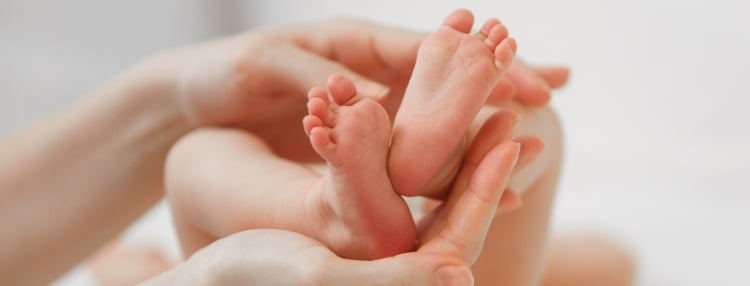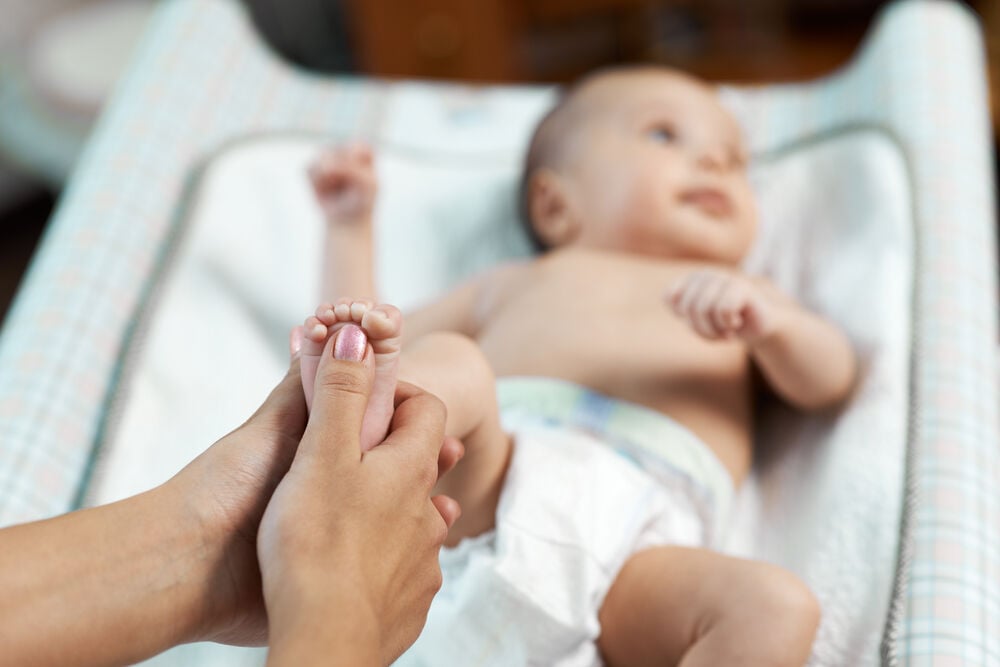Newborn babies display a range of automatic reflexes that protect them from dangers in their new environment. The Babinski or plantar reflex is an example. Join Flo for an in-depth explanation.
-
Tracking cycle
-
Getting pregnant
-
Pregnancy
-
Help Center
-
Flo for Partners
-
Anonymous Mode
-
Flo app reviews
-
Flo Premium New
-
Secret Chats New
-
Symptom Checker New
-
Your cycle
-
Health 360°
-
Getting pregnant
-
Pregnancy
-
Being a mom
-
LGBTQ+
-
Quizzes
-
Ovulation calculator
-
hCG calculator
-
Pregnancy test calculator
-
Menstrual cycle calculator
-
Period calculator
-
Implantation calculator
-
Pregnancy weeks to months calculator
-
Pregnancy due date calculator
-
IVF and FET due date calculator
-
Due date calculator by ultrasound
-
Medical Affairs
-
Science & Research
-
Pass It On Project New
-
Privacy Portal
-
Press Center
-
Flo Accuracy
-
Careers
-
Contact Us
Babinski Sign in Babies: What’s Normal?

Every piece of content at Flo Health adheres to the highest editorial standards for language, style, and medical accuracy. To learn what we do to deliver the best health and lifestyle insights to you, check out our content review principles.
What is the Babinski reflex?
Healthy newborns are able to demonstrate a number of reflex actions that protect them from dangers in their new environment and prepare them for the developmental challenges ahead.
The sucking and rooting reflexes help infants find food, the tonic neck and grasping reflexes prepare babies to reach for and hold objects, and the stepping and Babinski reflexes prepare infants to walk and protect them from falling.
The Babinski reflex, also called the plantar reflex, is commonly tested soon after birth and during routine wellness check-ups. It assesses normal development and may offer an early indication of developmental issues. The Babinski reflex is relatively easy to test at home and with little training.
When a health care provider administers the Babinski test, they use a reflex hammer to stroke the outer side of the sole of the baby’s foot from top to heel. In an adult or older infant, the big toe will move down and the remaining toes will also flex in the same direction and bunch together.
In healthy babies under 12 months old or adults with brain or spinal cord damage, the big toe will move up and the other toes will extend and spread out. Read on for our comprehensive guidelines for the Babinski reflex, including how it’s tested and what normal and abnormal findings look like.
When does a plantar reflex appear and go away?
The Babinski sign is common in newborns and typically disappears by 9–12 months. Some older babies still display the reflex at 24 months, but beyond this age, it is usually associated with developmental problems.
How is a Babinski test conducted?

The Babinski test requires a dull, blunt instrument and does not cause pain or injury. A health care provider strokes the sole of the infant’s foot from toes to heel. They may use the dull point of a reflex hammer, a tongue depressor, or the edge of a key. More recently, to avoid spreading infections, single-use testing kits are used as an alternative to reflex hammers.
The plantar reflex can be uncomfortable for adults, so health care providers will often provide advance warning. This is not possible in the case of a newborn or young infant. Nevertheless, it helps to settle the baby and put them at ease before beginning the test. Parents can help with this, calming the baby and distracting them if necessary.
Because the Babinski test can be unpleasant for the baby, it’s common for parents to feel unsettled. However, this reflex is an important part of a comprehensive wellness check. Pediatricians test for the full range of normal reflexes in babies to ensure healthy neurological development.
Testing for the plantar reflex can be done with a fingernail scratching across the surface of the sole, at first gently and then more firmly. Moving from gentle to firm allows a normal plantar reflex to be stimulated without the baby becoming upset or resistant to further examination. After a gentle scratch, a sharper implement can be used.
The Babinski test begins at the heel of the foot and strokes along the outside border of the sole towards the toes. Even with a sharper object, the motion should be relatively gentle and should not dig into the skin of the foot.
When is a Babinski sign normal and abnormal?
The science around the Babinski sign and what it means is not completely understood, even now. It appears that every part of the skin has the potential to reflexively react to a dangerous or harmful stimulation by withdrawing from the cause. It’s easy to imagine this reflex by thinking about standing on something sharp while barefoot, the foot and leg immediately recoiling from the danger.
In the Babinski sign, the big toe moves up while the remaining toes extend and spread out. This reaction is normal in a newborn baby, and usually disappears by 12 months. Although some healthy babies still display the Babinski sign at 24 months, it is typically an indication of developmental problems associated with the brain or spinal cord beyond this age.
Monitoring the reflexes of newborns and young infants is an important step in checking for developmental problems. By ensuring that all reflexes — Babinski and others — are normal, pediatricians and health care providers can determine babies’ developmental progress. If there are any abnormalities, detecting them early means a health care provider can provide advice about the child’s ongoing care.
Take a quiz
Find out what you can do with our Health Assistant


Hey, I'm Anique
I started using Flo app to track my period and ovulation because we wanted to have a baby.


The Flo app helped me learn about my body and spot ovulation signs during our conception journey.


I vividly
remember the day
that we switched
Flo into
Pregnancy Mode — it was
such a special
moment.
Real stories, real results
Learn how the Flo app became an amazing cheerleader for us on our conception journey.




